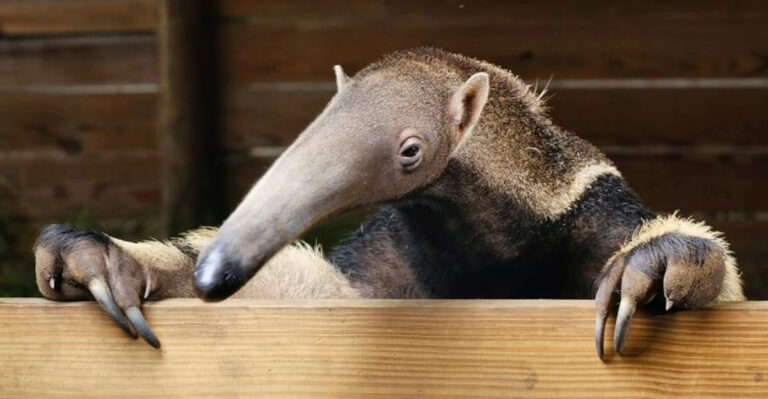The Importance Of Elevating Birdbaths For Better Use
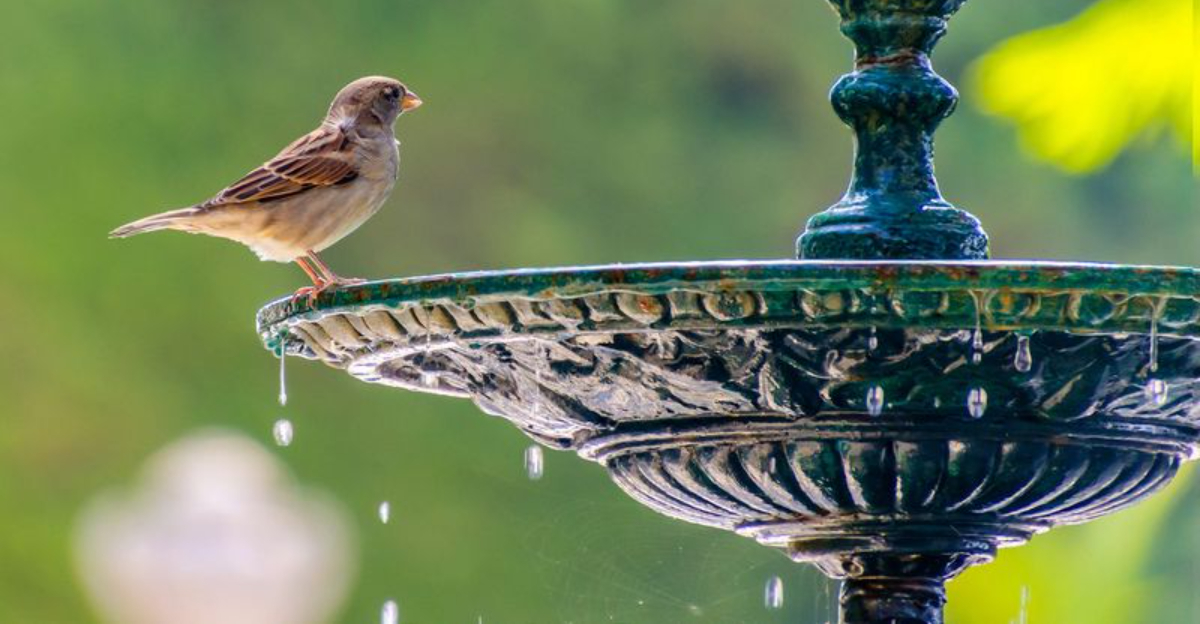
Birdbaths bring delightful feathered visitors to your garden, but their placement matters more than you might think.
Elevating your birdbath above ground level creates a safer, more attractive environment for birds while enhancing your backyard experience.
Birds naturally prefer higher perches where they can spot predators and feel secure while bathing and drinking. Let’s explore twelve compelling reasons to lift your birdbath to new heights!
Predator Protection
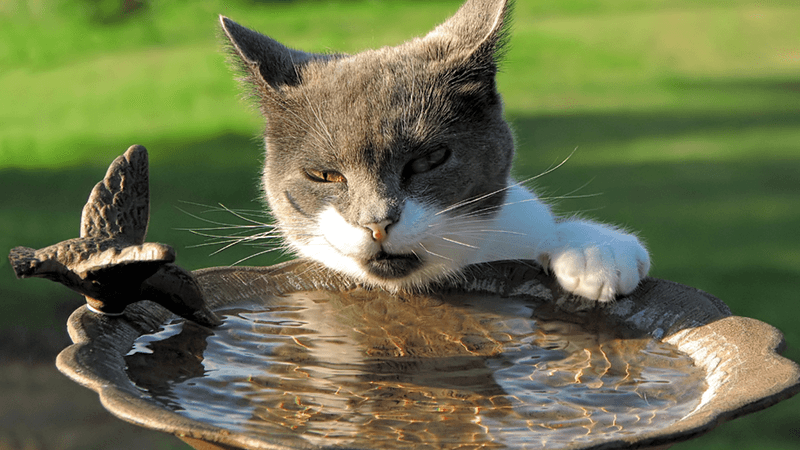
Birds feel vulnerable when bathing because wet feathers make flying difficult. A ground-level birdbath leaves them exposed to neighborhood cats, foxes, and other prowling predators.
Raising your birdbath at least 3 feet off the ground gives birds a better vantage point to spot danger approaching. They’ll visit more frequently when they feel safe, transforming your garden into a bustling bird sanctuary.
Many bird species will avoid ground baths entirely due to instinctive caution, so elevation instantly increases your birdbath’s appeal to a wider variety of beautiful visitors.
Reduced Water Contamination
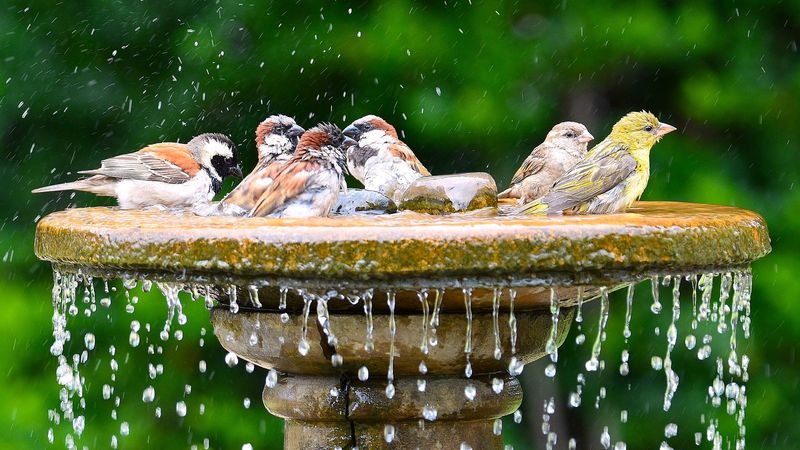
Ground-level birdbaths quickly become contaminated with soil, lawn chemicals, and animal droppings. Lifting your bath higher dramatically reduces these contaminants, keeping the water fresher between cleanings.
Birds depend on clean water for healthy feathers and hydration. Dirty water can spread diseases among your feathered visitors, potentially harming entire local populations. Height creates a natural barrier against many common pollutants.
You’ll spend less time scrubbing and refilling an elevated bath, making maintenance easier while providing healthier conditions for your avian friends. This simple change protects both birds and your investment in a beautiful garden feature.
Garden Design Enhancement
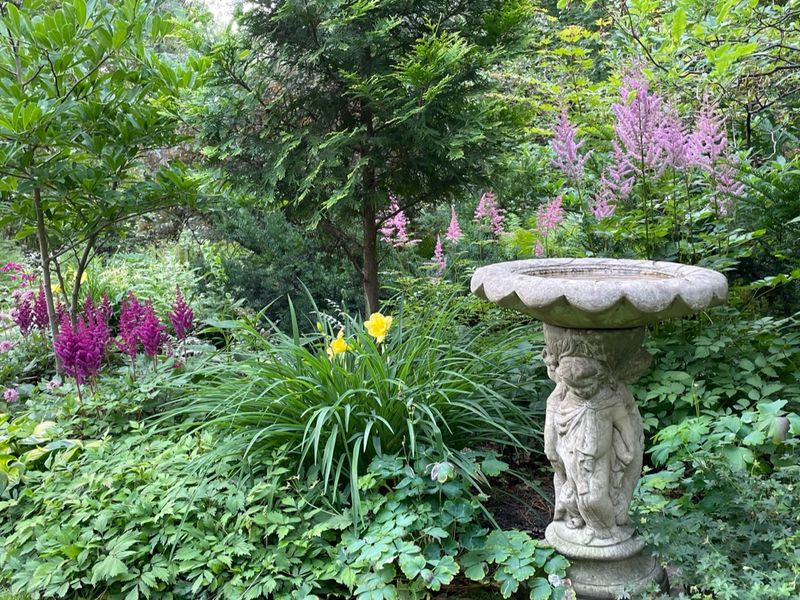
A birdbath sitting directly on the ground often looks like an afterthought in garden design. Elevating it transforms this functional element into a striking focal point that draws the eye and anchors your landscape composition.
Pedestal models add vertical interest to otherwise flat garden beds. The height variation creates visual rhythm alongside flowers and shrubs of different sizes. Many elevated designs feature artistic pedestals that contribute sculptural beauty even when birds aren’t present.
This vertical element helps break up large spaces and can define different garden zones or create natural pathways through your outdoor space – serving both wildlife and aesthetic purposes simultaneously.
Better Visibility For Birdwatching
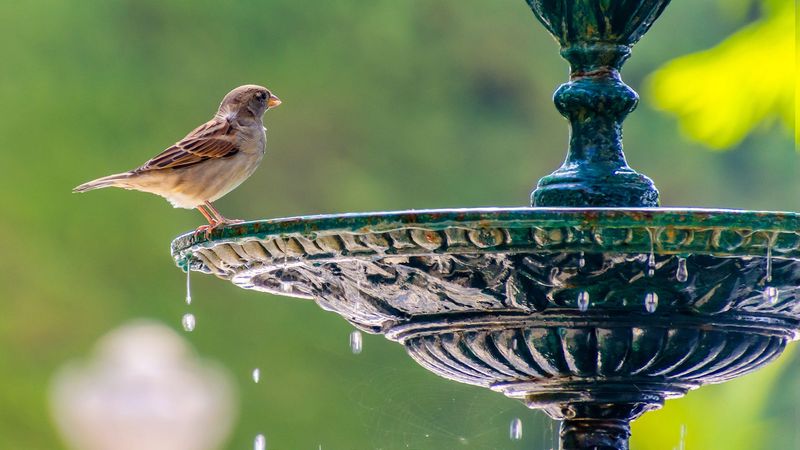
Watching birds splash and play is one of the greatest joys of having a birdbath. When positioned at eye level from your favorite window or porch chair, an elevated bath transforms ordinary birdwatching into an immersive experience.
You’ll notice fascinating behaviors you might miss with a ground-level bath – like the unique bathing styles of different species or the social hierarchies that emerge around water access. Some birds dip and flutter while others perform elaborate bathing rituals.
Children especially benefit from this improved viewing angle, sparking curiosity about nature without requiring binoculars or special equipment.
Reduced Leaf And Debris Accumulation
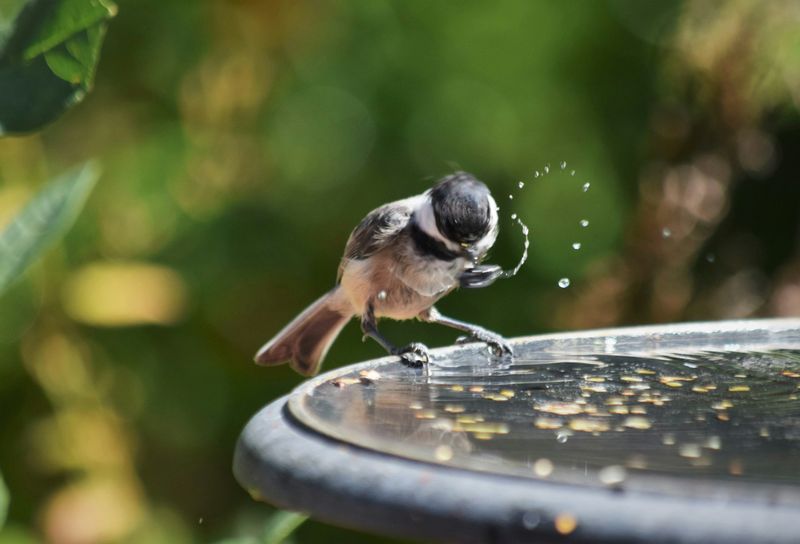
Fallen leaves, grass clippings, and garden debris constantly find their way into ground-level baths. Raising your birdbath several feet dramatically reduces this natural litter, keeping water cleaner between maintenance sessions.
Birds prefer fresh water and will avoid baths filled with decomposing plant material. Less debris also means fewer mosquito breeding opportunities and slower algae growth – problems that plague many ground baths. The elevation creates natural distance from lawn mowers and weed trimmers too.
You’ll save significant time on cleaning when your bath isn’t positioned directly under trees or in the path of blowing debris, making it more enjoyable to maintain.
Improved Drainage Options
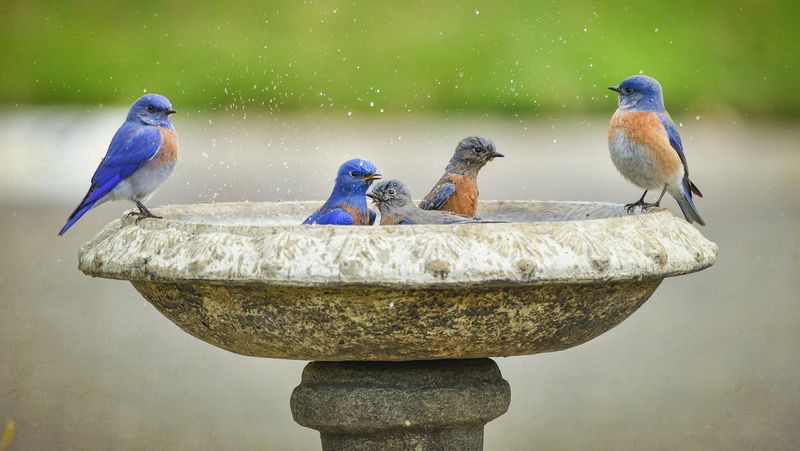
Standing water around a birdbath creates muddy patches and potential mosquito breeding grounds. Elevated designs typically include better drainage systems that direct overflow away from the base, preventing soggy spots in your garden.
Many pedestal models feature built-in channels that collect and redirect excess water during rain or cleaning. This thoughtful engineering protects your lawn and prevents erosion around your birdbath’s foundation. The height also allows you to position drainage away from delicate plants.
For winter maintenance in colder climates, elevated baths are easier to tip and empty completely, preventing freeze damage to both the bath and surrounding landscape.
Natural Bird Preference
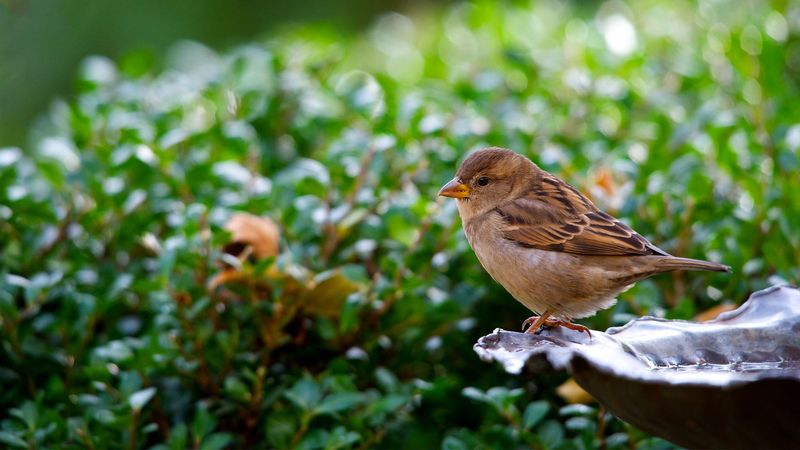
Birds evolved to seek higher perches for safety and comfort. Wild birds naturally drink from elevated water sources like tree cavities and rock formations rather than puddles when given options. Your elevated bath mimics these preferred natural conditions.
Watch how birds approach water – they prefer to survey the area from above before committing to bathing. A raised bath allows them to follow this instinctive behavior pattern, perching on the rim to check for danger before diving in. This creates a more relaxed, natural bathing experience.
Many species show clear preferences for height in scientific studies of bird behavior, with medium-height baths (3-4 feet) attracting the greatest diversity of species.
Protection From Ground Frost
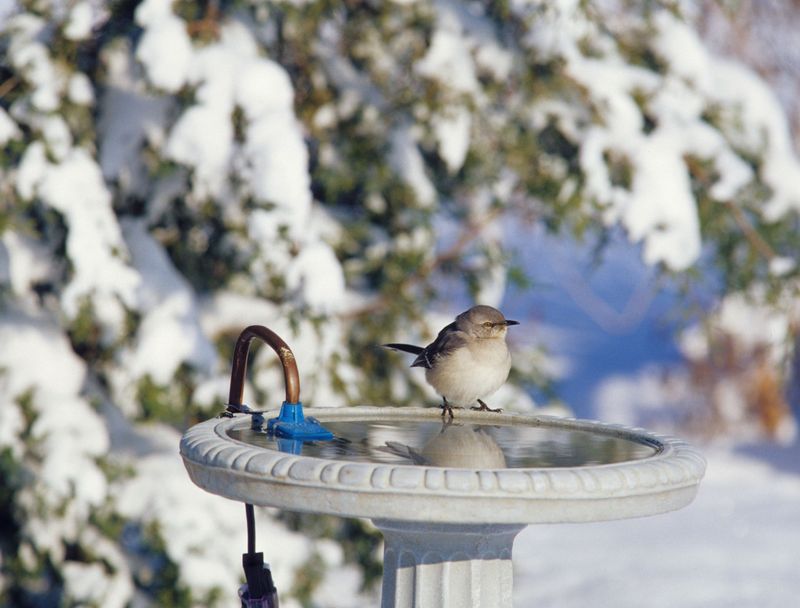
During cold seasons, ground temperatures drop faster than air temperatures. An elevated birdbath stays warmer longer than one sitting directly on frozen ground, extending the hours birds can access unfrozen water each day.
Water is critically scarce for birds in winter when natural sources freeze. Your elevated bath might be their only drinking option on frosty mornings. Some gardeners even add heating elements to elevated baths, which would be impractical or unsafe at ground level.
The height also reduces snow accumulation around the bath’s edges during winter storms, keeping access open when birds need water most. This small advantage can make a life-saving difference for your feathered visitors during harsh weather.
Easier Maintenance Access

Scrubbing a birdbath at ground level means kneeling or bending awkwardly – uncomfortable for anyone, but particularly challenging for gardeners with mobility issues. Elevated designs bring the cleaning task to a comfortable working height.
Regular maintenance becomes simpler when you don’t need to crouch. You’ll clean more thoroughly and frequently when the task doesn’t strain your back and knees. Many pedestal models feature removable basins that can be carried to a utility sink for deep cleaning.
This ergonomic advantage becomes increasingly important as we age but want to continue enjoying our gardens and bird-friendly habitats. Comfort leads to consistency in maintenance, which directly benefits bird health.
Reduced Risk Of Lawn Damage

Ground-level birdbaths create perpetually wet spots that kill grass and compact soil. Water splashed by enthusiastic bathers creates muddy rings that never quite dry out, especially in shaded areas.
Elevating your bath allows air circulation underneath, helping the ground dry between splashes. Any overflow disperses more widely rather than saturating one spot. This design prevents those unsightly dead patches that can develop around ground baths.
Your lawn maintenance becomes simpler too – no awkward mowing or trimming around a ground obstacle. The pedestal creates a clear vertical element that’s easy to navigate with garden equipment while keeping the actual basin well above your mowing path.
Greater Variety Of Bird Species
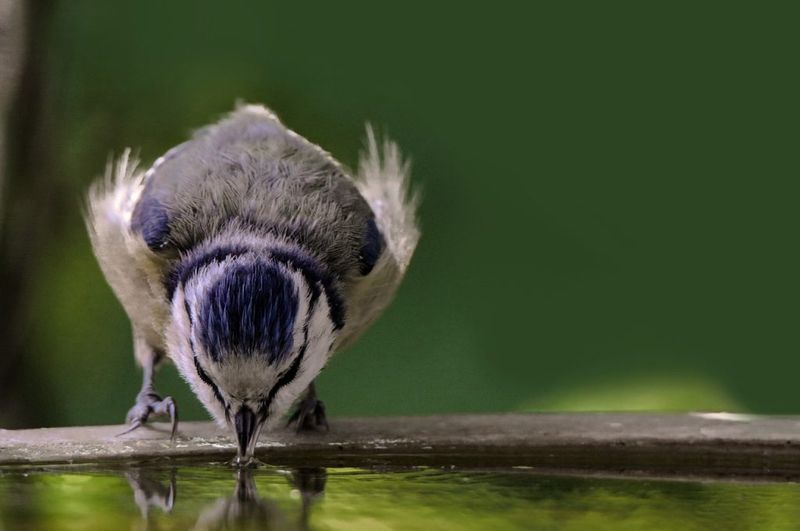
Different birds prefer different bathing heights. Ground-feeders like sparrows and doves might use low baths, but you’ll miss out on tanagers, orioles, and warblers that rarely descend to ground level. An elevated bath attracts this wider spectrum of species.
Shy woodland birds that avoid exposed areas will venture to elevated baths, especially when positioned near trees or shrubs that offer quick escape routes. These less common visitors bring exciting color and song to your garden that ground baths simply can’t attract.
Bird photography enthusiasts particularly benefit from this diversity, capturing species that might otherwise never visit their yards. Your elevated bath becomes a stage for observing interactions between species that occupy different ecological niches.






